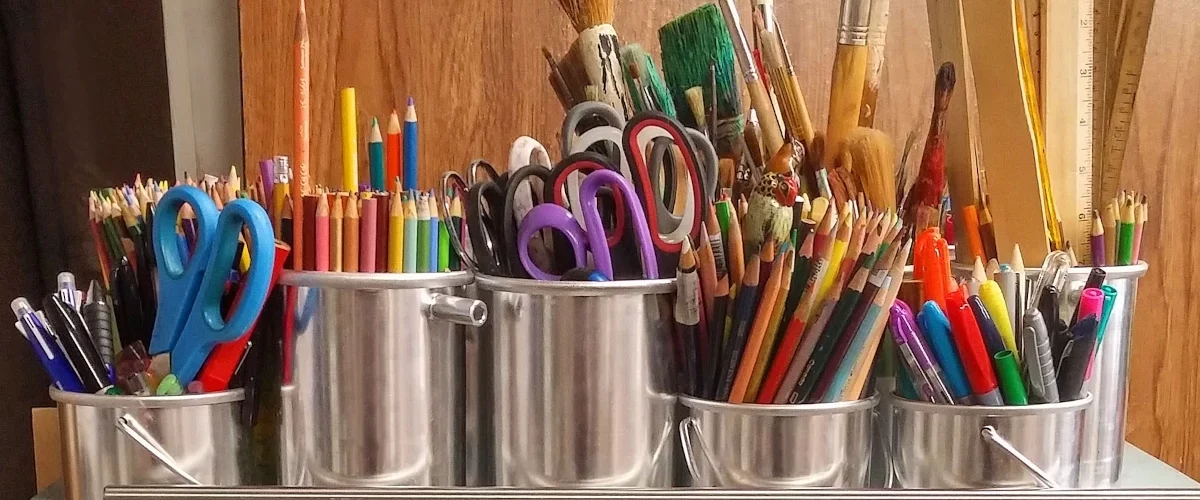Art and craft are two terms often used interchangeably, but they represent distinct forms of creative expression. Understanding the boundaries between art and craft can provide valuable insights into the diverse ways humans channel their creativity. In this article, we will explore the differences between art and craft, present examples of each, and discuss the unique benefits they offer to individuals and society.
Art: A Pathway to Emotional and Conceptual Exploration
Art encompasses a wide range of creative endeavors that prioritize emotional and conceptual expression over practical functionality. Artists use various mediums such as painting, sculpture, photography, and performance to communicate ideas, evoke emotions, challenge norms, and invite reflection. Art often encourages viewers to interpret and engage with the work on a personal level, allowing for multiple perspectives and meanings.
One iconic example of art is Vincent van Gogh’s “Starry Night,” which portrays a dreamlike landscape with expressive brushstrokes and vibrant colors. The painting’s purpose is not utilitarian but rather to evoke a sense of awe and contemplation in the viewer. Similarly, Salvador Dalí’s surrealist artworks like “The Persistence of Memory” challenge traditional notions of reality, inviting viewers into a world of subconscious symbolism.
Craft: The Fusion of Functionality and Skillful Execution
Craft, on the other hand, emphasizes the mastery of techniques, precision, and the creation of functional objects. It involves skilled craftsmanship, often passed down through generations, and frequently involves materials such as wood, clay, textiles, or metal. Craftsmen focus on creating items with practical purposes, while still exhibiting aesthetic appeal.
An excellent example of craft is handmade pottery, where the potter skillfully molds and shapes clay into functional vessels with exquisite designs. The intricate woodwork of a finely crafted piece of furniture or the meticulous embroidery of a traditional garment also exemplify the meticulous skill and attention to detail that define craft.
Defining the Boundaries:
While art and craft share some similarities, certain characteristics help differentiate them. Transitioning between art and craft can be fluid, as some creations may straddle the boundaries. However, the following aspects provide a general framework for distinguishing between the two:
- Purpose: Art prioritizes emotional expression, conceptual exploration, and evoking thought, whereas craft emphasizes practical functionality and utility.
- Skill and Technique: Art often involves experimentation and innovation, while craft emphasizes traditional techniques, mastery, and precision.
- Interpretation: Art invites subjective interpretation, allowing viewers to derive personal meaning, while craft generally has a more objective and utilitarian purpose.
- Originality: Art tends to prioritize originality and uniqueness, pushing boundaries and challenging established norms, while craft may involve replicating established designs and techniques.
Benefits of Art:
Artistic expression brings forth numerous benefits to individuals and society as a whole. Here are some key advantages:
- Emotional Catharsis: Engaging with art can provide an outlet for emotional expression, allowing individuals to process and explore complex feelings.
- Reflection and Self-Discovery: Art encourages introspection, providing a space for self-reflection, personal growth, and self-discovery.
- Cultural Preservation: Artistic creations often reflect cultural heritage, preserving traditions, stories, and beliefs for future generations.
- Social Commentary: Art has the power to shed light on societal issues, provoke critical thinking, and foster discussions around important topics.
Benefits of Craft:
Craft also offers unique advantages that contribute to individual well-being and community development:
- Practical Utility: Crafting provides functional objects that enhance daily life, ranging from handmade furniture and ceramics to textiles and jewelry.
- Skill Development: Engaging in craft activities helps develop manual dexterity, problem-solving skills, and attention to detail.
- Cultural Identity: Crafting often carries the essence of a particular culture or community, helping preserve and celebrate cultural identity.
- Economic Opportunities: The craft industry can create job opportunities, support local economies, and foster entrepreneurship.
Summary
Art and craft, while distinct in their approaches, both contribute significantly to human creativity and cultural expression. Understanding the boundaries between the two enables us to appreciate the diverse ways in which individuals channel their creative energies. Art taps into emotions, concepts, and introspection, while crafting showcases skill, functionality, and cultural preservation. Embracing both art and craft allows us to experience the full breadth of human imagination and the power of creative expression.
Through art, we delve into the depths of human emotion and challenge societal norms. Craft, on the other hand, provides us with skillful execution, functional objects, and cultural heritage. By embracing and appreciating both art and craft, we enrich our lives and foster a deeper understanding of the world around us.
Learn more about art at Luxpeer Art blog.
